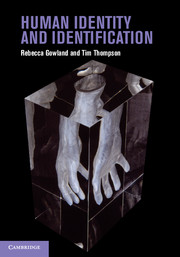7 - Intentional modification of the phenotype
Published online by Cambridge University Press: 05 February 2013
Summary
Possibly more so than any other form of identification, body modifications represent the confluence of the biological and social self, and therefore the most obvious intersection of the biological and social sciences. Entwhistle notes that the materials we place at the margins of the body lie on the boundary between self and other, and that these artefacts belong to both our body and to the social world (2002). Body modification incorporates a wide range of activities including: tattooing, piercing, scarification, implantation, tooth extraction, filing and inlaying, body building and anorexia (Featherstone, 1999). It is important to note that most forms of modification involve pain and in so doing the experience or process is firmly located in a corporeal plane (Back, 2004). Intentional modification of the human form has great antiquity, with evidence for tattooing and cranial shaping dating back millennia and from all parts of the world. Within Western culture the body has recently become an increasingly common medium through which personal identity is expressed (or subverted) through a variety of forms of modification; of these, tattoos and piercings are increasingly common. Technological advances over the last century have meant that our ability to modify the human form is immense and growing. More than ever before, the human body is penetrated and merged with inorganic, foreign material, whether for cosmetic, social or medical purposes. The physical form has never seemed so malleable. Indeed, cyberpunk literature talks of ‘ditching the meat’ altogether – of escaping corporeal limitations through the process of being assimilated and immersed in technology (Poster, 2004).
Much has been written in the sociological literature regarding the motivations and desires behind the practices of modification in the Western world from the prosaic to the extreme (e.g. Featherstone, 1999; Pitts, 2002). For example, Shilling discusses aspects of body modification in relation to the concept of the ‘body project’ and the shaping of the body as an essential means of constructing the self (1993). Many contemporary accounts of body modification invoke the idea of taking ‘control’ over one’s body (Featherstone, 1999: 2). These debates will not be rehearsed here. By contrast, within the human identification literature, discourse on body modifications has featured very infrequently (though see Black & Thompson, 2007).
- Type
- Chapter
- Information
- Human Identity and Identification , pp. 159 - 174Publisher: Cambridge University PressPrint publication year: 2013



